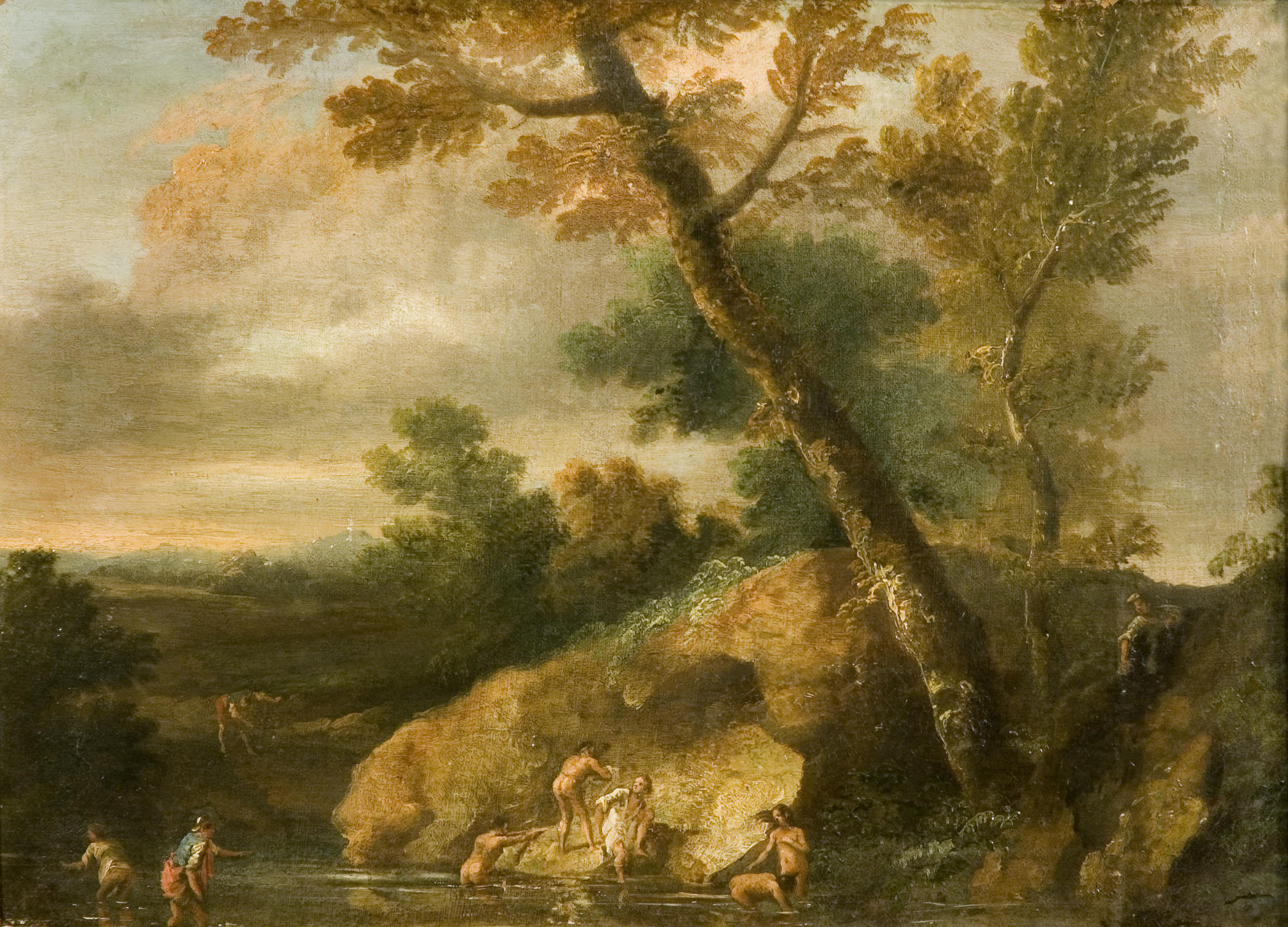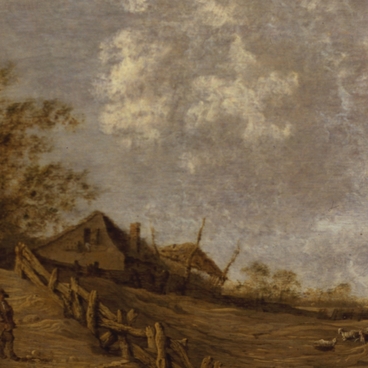The picture’s origin from the collection of the museum’s founder draws special attention to it from the researchers and viewers. Not to many pictures by the old masters from the collection of Alexei P. Bogoloubov make one gaze fixedly at them in order to understand what painting merits attracted the attention of Bogoloubov here who used to confess that he gained understanding of painting not from the books, but from nature and ‘other people’s pictures having an effect on me.’ Landscape with Bathers was first attributed to the 17th century and was linked with the name of Salvator Rosa.
Research showed that the picture was painted on a factory-made canvas, painting technique also indicates a later origin of the picture. Its author was a painter of the 18th century. But still it is not for nothing that the name of Salvator Rosa arose in connection with this landscape. A favourite motif of his 'turbulent pictures' is a tree trunk cut by the frame. It combines the earth and the sky, the far and the near, minor events of a human life and the infinity of heavens.
The tree dissects the composition diagonally imparting dynamism to it. In the foreground is a body of water. In the water and on the bank are the female bathers caught unawares by shepherds. This motif has long-standing mythological roots. Lustful satyrs used to stalk bathing nymphs all the time. In our picture the ancient theme turns into an everyday scene from modern life. It can be linked with a pastoral theme favoured by the painters working in the rococo style.
A romantic layout of the landscape, as well as the scenery itself resembling the hills of Posillipo, its colour palette based on the combination of brownish, grayish, greenish shades make it possible to link the landscape with the Neapolitan School according to the tradition. Probably, the author of the picture might have been one of the followers of the romantic school on landscape of the 17th century linked with the name of the Neapolitan Salvator Rosa. Where, under what circumstances was the picture purchased by A.P. Bogoloubov is an enigma.
On the back side of the canvas there is an inscription: “No.127, presented as gift to the gallery of Count Buxhoeveden in 1832.” The collector, F.F. Buxhoeveden (1750-1811), military governor of Petersburg, who, under Emperor Paul I, was the Commander of the Order of St John of Jerusalem, is known. But it is not really known whether his gallery was mentioned and who presented the picture. Regrettably, Bogoloubov rarely commented on the history of his artistic acquisitions. Landscape with Bathers could have been of interest to him as a work by an artist who was close to him in perception of nature and craftsmanship.



